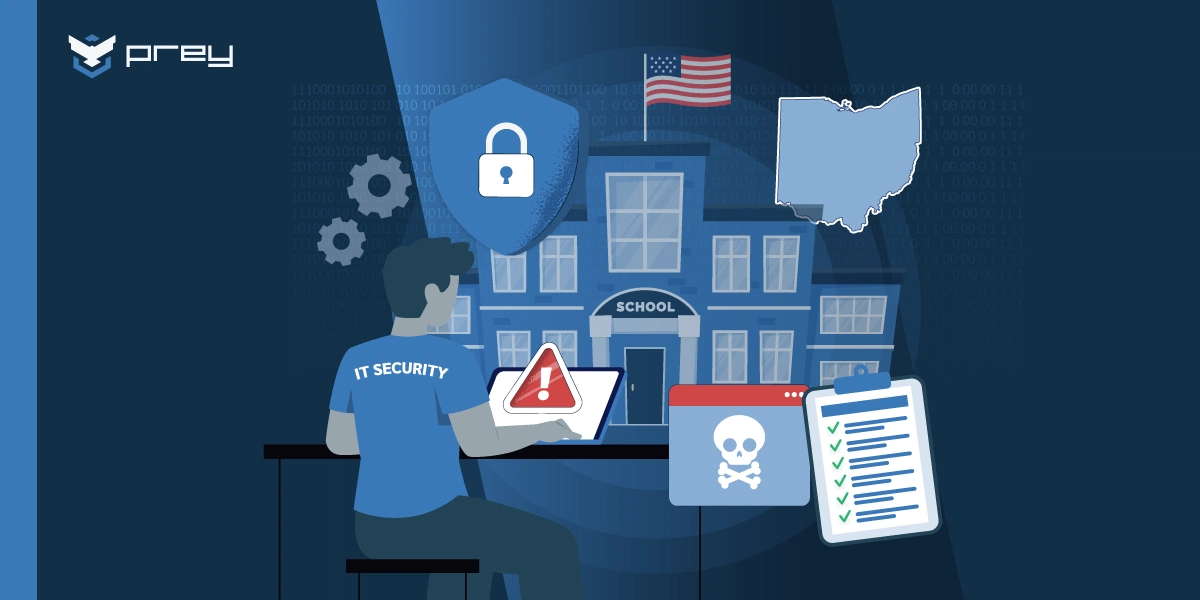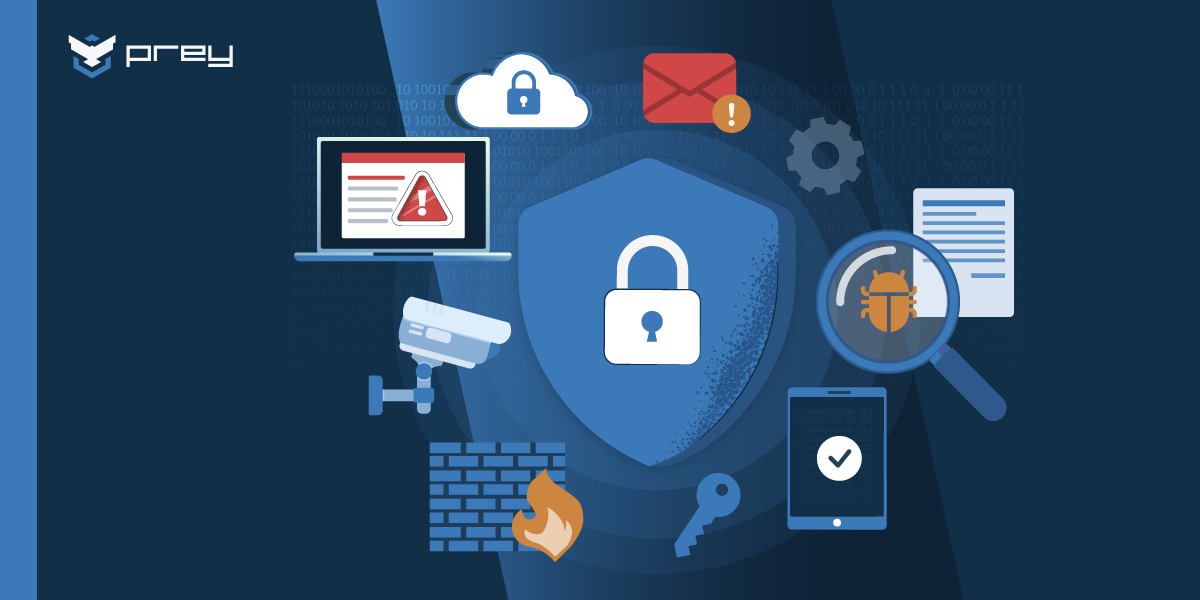When talking about digital defenses, a cybersecurity framework serves as the blueprint for safeguarding an organization against cyber threats and provides a safe passage to compliance with security regulations. It gives a structured approach to managing cybersecurity risk, encompassing processes, technology, and people, which are all integral components of a robust security posture. Choosing the right cybersecurity framework is no less critical than selecting the best tools for any job.
The selection of an appropriate framework can significantly impact an organization's ability to mitigate cyber threats, maintain regulatory compliance, and ensure the security of its digital assets. The process is akin to the iconic moment in The Matrix when Neo is offered a choice between the red and blue pills. In the cybersecurity world, choosing the right cybersecurity framework is the decisive step towards revealing and navigating the complex realities of cyber threats, and ultimately, ensuring the resilience of your digital world.
Understanding Cybersecurity Frameworks
Understanding cybersecurity frameworks is essential for organizations looking to safeguard their digital assets and ensure compliance. These frameworks are divided into three categories: control frameworks, risk frameworks, and program frameworks, each with its own set of advantages and disadvantages.
Control frameworks
Control frameworks provide a comprehensive set of security controls and measures to protect information systems. They are designed to enhance an organization's security posture while meeting regulatory compliance requirements. These frameworks are crucial because they offer standardized guidelines to follow, reducing the risk of oversight and enhancing the overall security landscape.
- Pros: Clear guidelines, comprehensive security controls, compliance-focused
- Cons: Rigidity, potential for gaps in coverage
Risk frameworks
Risk frameworks focus on identifying, assessing, and managing potential risks and vulnerabilities within an organization. They help prioritize resources and efforts based on the likelihood and impact of potential threats. Risk frameworks are essential because they promote a proactive approach to security, allowing organizations to stay ahead of emerging threats and adjust their defenses accordingly.
- Pros: Flexible, prioritizes risk management, adaptable to changing threats
- Cons: Less prescriptive, may require additional expertise to implement
Program frameworks
Program frameworks offer a strategic approach to building and maintaining an organization's overall cybersecurity program. They emphasize continuous improvement and adaptability, taking a holistic view of security and risk management. Program frameworks are important because they foster an organization-wide security culture, ensuring that all aspects of security are considered and addressed, ultimately creating a more resilient organization.
- Pros: Comprehensive, adaptable, fosters a security culture
- Cons: Complexity, resource-intensive
Choosing the right cybersecurity framework depends on an organization's unique needs and goals, and a thorough understanding of these categories can help in making an informed decision.
Benefits of Implementing a Cybersecurity Framework
Implementing a cybersecurity framework offers numerous benefits to organizations, ranging from improved security to increased customer trust. By adopting a structured and comprehensive approach to cybersecurity, organizations can better protect their digital assets, ensure compliance, and build a strong reputation.
A. Improved security posture
By following a well-designed cybersecurity framework, organizations can identify and address potential vulnerabilities, leading to a strengthened security posture. This allows them to stay ahead of emerging threats, minimize the risk of breaches, and maintain the integrity of their systems.
B. Compliance with regulations
Cybersecurity frameworks help organizations meet regulatory requirements and adhere to industry standards. Compliance with these regulations not only keeps businesses in good standing with governing bodies but also reduces the risk of legal repercussions, fines, and damage to reputation.
C. Increased customer trust
Implementing a robust cybersec framework demonstrates an organization's commitment to safeguarding sensitive data. This instills confidence in customers and business partners, as they trust that their information is being handled securely and responsibly. In an increasingly digital world, trust is a valuable asset that can set a company apart from its competitors.
Dangers of Not Choosing the Right Cybersecurity Framework
Not choosing the right cybersecurity framework can have severe consequences for an organization, exposing it to increased risks and potential losses. A poorly suited or inadequately implemented framework can undermine an organization's efforts to protect itself from cyber threats and maintain compliance with industry regulations.

A. Increased risk of cyberattacks
An ill-suited cybersecurity framework can leave an organization vulnerable to cyberattacks, potentially resulting in data breaches, financial losses, and operational disruptions. By failing to address key vulnerabilities or adequately prioritize resources, businesses may find themselves exposed to a range of threats and devastating consequences.
B. Non-compliance with regulations
Selecting the wrong cybersec framework can lead to non-compliance with industry regulations and standards, resulting in fines, legal repercussions, and a damaged reputation. Ensuring that the chosen framework aligns with relevant regulatory requirements is crucial to avoiding these negative outcomes.
C. Loss of customer trust
If a company's cybersecurity framework is not up to par, it can result in a loss of customer trust. In the event of a data breach, customers may become hesitant to engage with the organization or share sensitive information. Restoring customer confidence after a cybersecurity incident can be a costly and time-consuming process.
Key Considerations When Choosing a Cybersecurity Framework
Selecting the right cybersec framework is a crucial decision that should be tailored to an organization's unique needs and circumstances. There are several key considerations to keep in mind when evaluating different frameworks, such as company size, industry regulations, budget, and current security posture. Taking these factors into account will ensure that the chosen framework is effective in addressing the organization's specific security challenges and is sustainable in the long run.
A. Company size and complexity:
The cybersec framework should be appropriate for the organization's size and level of complexity, as different frameworks cater to various scales and structures. Larger organizations with more complex IT infrastructures may require a more comprehensive and adaptable framework, whereas smaller businesses might benefit from a simpler, more focused approach. Considering size and complexity ensures that the framework is manageable and effective in the organization's unique context.
- Number of employees
- Geographic distribution
- IT infrastructure complexity
- Data sensitivity
- Business processes
B. Industry regulations:
Compliance with relevant industry regulations and standards is essential, so it's vital to ensure that the chosen framework aligns with these requirements. Different industries may have specific security and data protection standards, which must be met to avoid fines, legal repercussions, and reputational damage. Selecting a framework that addresses these regulations ensures that the organization remains compliant and maintains a positive standing within its industry.
- Data protection regulations
- Industry-specific standards
- Legal and contractual obligations
- Reporting and auditing requirements
- Cross-border data transfer regulations
C. Budget and resources:
Organizations should choose a framework that fits within their budget and resource constraints, considering both implementation and ongoing maintenance costs. A cybersec framework that strains an organization's budget or personnel resources may not be sustainable or effectively implemented. Balancing the cost and resource requirements with the desired security outcomes will help ensure long-term success in managing cybersecurity risks.
- Initial implementation cost
- Staff training and expertise
- Ongoing maintenance and updates
- Tool and technology investments
- External consultancy or services
D. Current security posture:
D. Current security posture: Assessing the organization's existing security posture can help identify areas of strength and weakness, guiding the selection of a cybersec framework that best addresses these needs. A thorough evaluation of the current security landscape will ensure that the chosen framework builds upon existing strengths and effectively addresses vulnerabilities, leading to a more resilient and secure organization.
- Existing security policies and procedures
- Identified vulnerabilities and risks
- Current security technology stack
- Incident response capabilities
- Security awareness and training levels
Key Considerations When Choosing a Cybersecurity Framework
Implementing a cybersec framework is a multi-step process that requires careful planning and execution. By following a structured approach, organizations can ensure that their chosen framework is effectively integrated into their security operations, providing a robust defense against cyber threats. Each step in the implementation process serves a specific purpose and contributes to the overall success of the framework.
A. Assess current security posture:
Begin by evaluating the organization's existing security infrastructure to identify strengths and weaknesses. This step is crucial because it helps organizations understand their current state and detect potential vulnerabilities before implementing the new framework.
Recommended steps to take:
- Review existing security policies and procedures
- Perform a risk assessment
- Identify gaps in security controls
- Assess staff security awareness and training
- Evaluate incident response capabilities
B. Develop a plan for implementation:
After assessing the current security posture, create a detailed plan for implementing the chosen cybersec framework. This step is important because a well-defined plan ensures a smooth and organized implementation process, reducing potential risks and inefficiencies.
Recommended steps to take:
- Prioritize identified gaps and vulnerabilities
- Set goals and objectives for implementation
- Allocate resources, including budget and personnel
- Establish a timeline for implementation
- Define roles and responsibilities for key stakeholders
C. Implement the framework:
Execute the implementation plan, ensuring that all elements of the chosen framework are effectively integrated into the organization's security operations. This step is vital as it transforms the organization's security posture, ensuring better protection against cyber threats and compliance with industry regulations.
Recommended steps to take:
- Train staff on the new framework
- Implement new security controls and measures
- Update existing policies and procedures
- Establish a communication plan for implementation progress
D. Monitor and update regularly:
Continuously monitor the effectiveness of the implemented framework and make updates as needed to stay ahead of emerging threats. This step is essential because the cybersecurity landscape is constantly evolving, and regular monitoring and updating ensure that the framework remains effective in the face of new challenges.
Recommended steps to take:
- Conduct regular security audits and assessments
- Review incident response and recovery procedures
- Update security policies and procedures as necessary
- Provide ongoing staff training and awareness programs
- Adapt the framework to evolving threat landscape and business requirements
.webp)
Conclusion
The importance of choosing the right cybersecurity framework cannot be overstated. A well-selected framework not only strengthens an organization's security posture but also ensures compliance with industry regulations and fosters customer trust. As a final thought, remember that the process of choosing the right cybersecurity framework is akin to finding the perfect key to unlock the door to a secure digital world. Much like Neo navigating the Matrix, make the right choice and secure your organization's future in an increasingly complex digital landscape.






